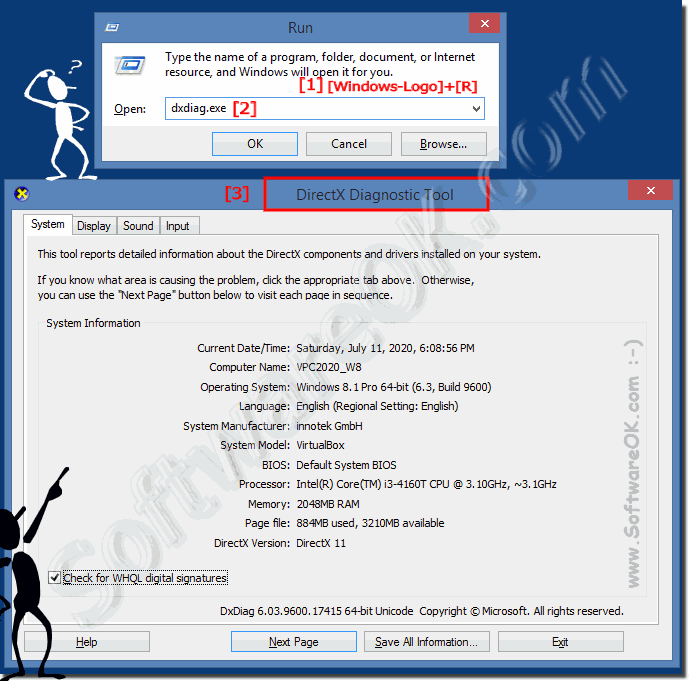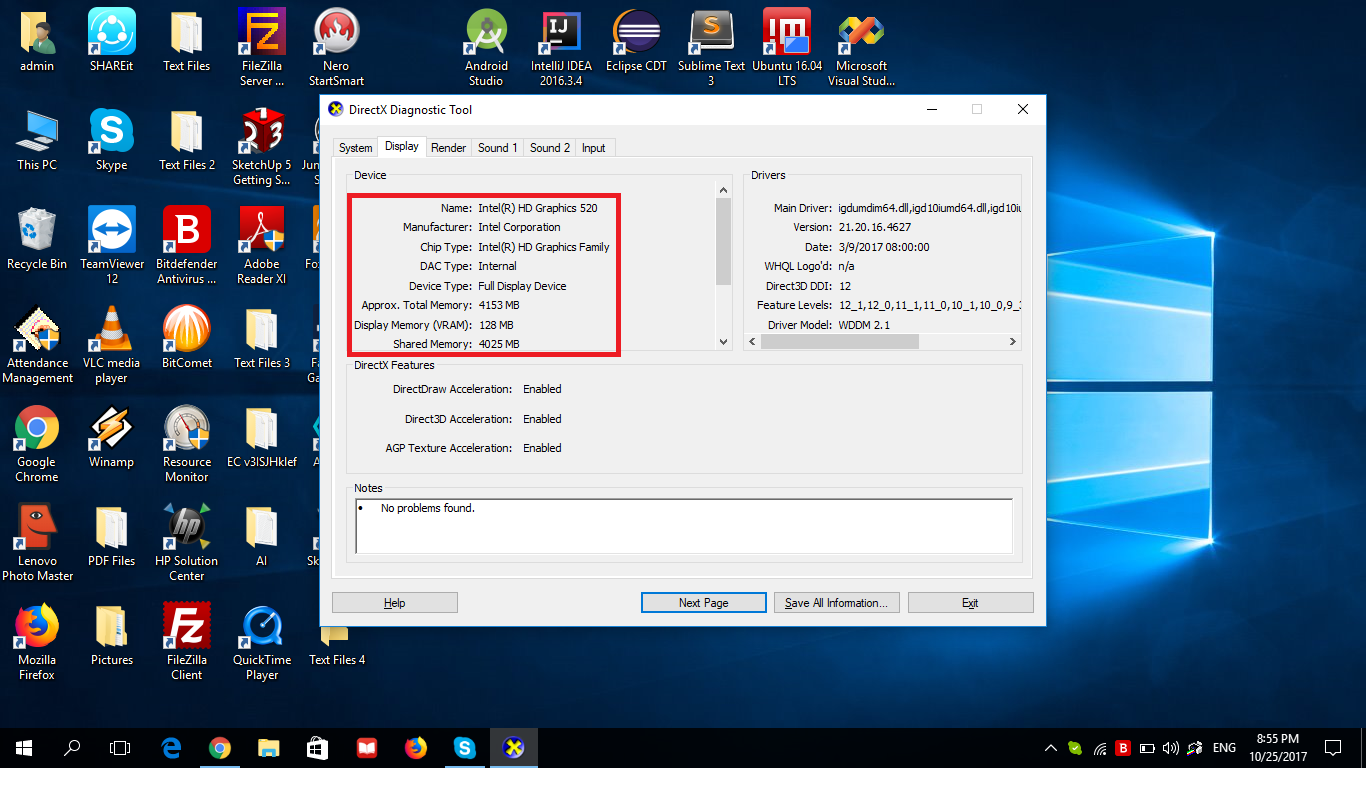Right-click blank area on the desktop, point at New in the context menu and tap Shortcut in. 4 ways to open DirectX Diagnostic Tool in Windows 10: Way 1: Open it through searching. Type dxdiag in the lower-left search box on desktop, and click dxdiag on the top of the list. Way 2: Turn it on in CMD. Step 1: Access Command Prompt. Step 2: Input dxdiag.exe, and press Enter on the keyboard. Way 3: Open it via Run. The tool is called DirectX Diagnostic and with it, you can troubleshoot and identify problems that are related to audio, display, video and other multimedia applications and features especially when you are running some advanced games on your computer. The DirectX Diagnostic Tool will load. If there is a pop-up window asking about digital driver signing; click the answer for your machine. Click Save all information, then Save as. Click on Save (the file should be saved to your desktop as dxdiag.txt). Exit the DirectX Diagnostic tool. Attach this file to your support ticket.
- Directx Diagnostic Tool Windows 7
- Directx Diagnostic Tool Keeps Popping Up
- Directx Diagnostic Tool Windows 7
- Directx Diagnostic Tool Pop Up

| File Info | Description |
|---|---|
| File Size: | 298 kB |
| File Modification Date/Time: | 2017:03:18 18:19:32+00:00 |
| File Inode Change Date/Time: | 2017:11:05 07:07:54+00:00 |
| File Type: | Win32 EXE |
| MIME Type: | application/octet-stream |
| Warning: | Possibly corrupt Version resource |
| Machine Type: | Intel 386 or later, and compatibles |
| Time Stamp: | 1994:11:24 07:39:15+00:00 |
| PE Type: | PE32 |
| Linker Version: | 14.10 |
| Code Size: | 252416 |
| Initialized Data Size: | 59392 |
| Uninitialized Data Size: | 0 |
| Entry Point: | 0x276c0 |
| OS Version: | 10.0 |
| Image Version: | 10.0 |
| Subsystem Version: | 10.0 |
| Subsystem: | Windows GUI |
| File Version Number: | 10.0.15063.0 |
| Product Version Number: | 10.0.15063.0 |
| File Flags Mask: | 0x003f |
| File Flags: | (none) |
| File OS: | Windows NT 32-bit |
| Object File Type: | Executable application |
| File Subtype: | 0 |
| Language Code: | English (U.S.) |
| Character Set: | Unicode |
| Company Name: | Microsoft Corporation |
| File Description: | Microsoft DirectX Diagnostic Tool |
| File Version: | 10.0.15063.0 (WinBuild.160101.0800) |
| Internal Name: | dxdiag.exe |
| Legal Copyright: | © Microsoft Corporation. All rights reserved. |
| Original Filename: | dxdiag.exe |
| Product Name: | Microsoft® Windows® Operating System |
| Product Version: | 10.0.15063.0 |
✻ Portions of file data provided by Exiftool (Phil Harvey) distributed under the Perl Artistic License.
Summary
Directx Diagnostic Tool Windows 7
This article describes how to determine the version of Microsoft DirectX that is installed on your computer by using the DirectX Diagnostic Tool.
More Information
To use the DirectX Diagnostic Tool to determine the version of DirectX that is installed on your computer, follow these steps:

Click Start, and then click Run.
Type dxdiag, and then click OK.
On the System tab, note the version of DirectX that is displayed on the DirectX Version line.
On the various tabs, check the version information for each DirectX file.
When you are finished checking file versions, click Exit.
If Windows cannot find the dxdiag program, DirectX version 5.0 or an earlier version of DirectX is installed on your computer. If this is the case, download and install the latest version of DirectX.
To download the latest version of DirectX, click the following article number to view the article in the Microsoft Knowledge Base:
Directx Diagnostic Tool Keeps Popping Up

Directx Diagnostic Tool Windows 7

Directx Diagnostic Tool Pop Up
179113 How to download and install DirectX